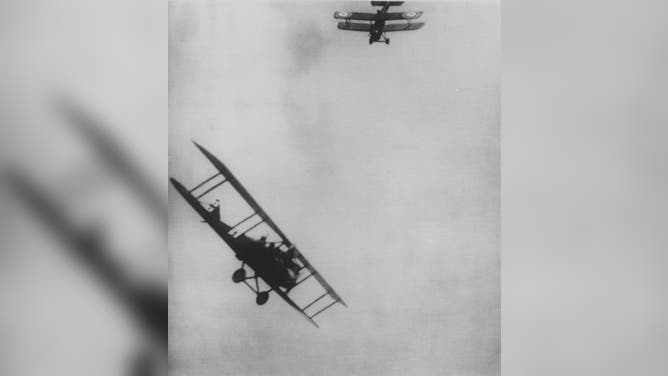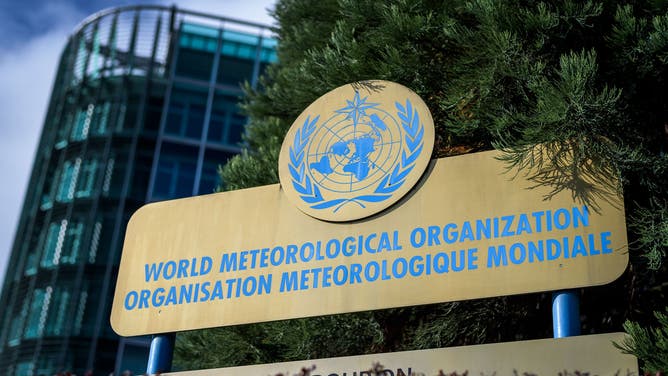World Meteorological Day highlights future of weather, climate across generations
On World Meteorological Day, the WMO hopes that we will look back at the simple beginnings of weather forecasting to appreciate the technology and collaboration that improved forecasts and will continue to evolve to help future generations live in a healthier and safer world.
World Meteorological Organization's process for naming storms
Clare Nullis, Media Officer for the World Meteorological Organization, explains their process for naming hurricanes and tropical storms.
When most of us think of the weather, we think of grabbing an umbrella for rain or sunscreen to protect us from the sun. The World Meteorological Organization wants us to take a step back to see the bigger picture of the weather and its impact on the world on World Meteorological Day, March 23.
After all, this day has been 150 years in the making, points out the World Meteorological Organization. "The future of weather, climate and water across generations" is the theme of World Meteorological Day 2023.
"While our everyday experience of weather is dominated by its local impact, weather and climate are truly global phenomena," wrote WMO members. "It is often said that ‘Weather and Climate know no boundaries,’ and an observer will quickly realize that weather systems develop and move across the planet regardless of political boundaries."
ON THIS DAY IN 1870: WEATHER TRACKING AGENCY NATIONAL WEATHER SERVICE IS FOUNDED
History of the World Meteorological Organization
The International Meteorological Organization was founded in 1873 in Vienna, Austria. The group morphed into the World Meteorological Organization, established through the United Nations on March 23, 1950. The U.N. recognized World Meteorological Day in 1961.
Members worked to improve weather instruments and to set up a worldwide network. The WMO installed observing stations around the North Pole in 1932-33 and showed how polar observations improved forecasts in other areas.
Funding and resources flooded into weather forecasting during WWI and WWII. The data holes only highlighted the further need for cooperation between all nations for better storm tracking and to make air and sea travel and transport safer.
HOW THE ATTACK ON PEARL HARBOR LED TO BAN ON US WEATHER DATA

Biplanes in a dogfight during WWI. The pilots are shooting at each other with revolvers.
(Hulton Archive / Getty Images)
The WMO launched the World Weather Watch program in 1963. Those weather satellites launched were part of the U.N.’s "agenda for the peaceful use of outer space," according to the WMO.
World Data Centers held findings of glaciers, solar activity, radiation, auroras, geomagnetism, the ozone layer and oceanography never before collected. Computer, communication and satellite advancements led to organizations like the Global Climate Observing System.
WEATHER SATELLITES EXPLAINED: HOW NASA, NOAA MAKE FORECASTING POSSIBLE

A view of the building of the World Meteorological Organization which hosted the 50th session of the Intergovernmental Panel on Climate Change.
(FABRICE COFFRINI / AFP / Getty Images)
Managing climate change is key to future generations, WMO says
The WMO issued its first statement on climate change in 1979. Along with the U.N. they helped establish the Intergovernmental Panel on Climate Change (IPCC). The panel released a new finding just this week, "Climate time bomb is ticking."
"The global average temperature is more than 1.1°C higher than it was when the IMO was founded 150 years ago. Our weather is more extreme, our ocean is warmer and more acidic, sea levels have risen and glaciers and ice are melting. The rate of change is accelerating," said Taalas. "Climate change is the defining challenge of our time. How we respond to that challenge will determine the future of our planet and our children and grandchildren."
The U.N.’s Secretary General, Antonio Gutterres points to World Meteorological Day to them and hopes it will inspire world citizens to "live up to our responsibilities to ensure that future generations inherit a better tomorrow."
MAJORITY OF YOUNG PEOPLE HAVE ‘CLIMATE ANXIETY,' SURVEY FINDS
"2023 must be a year of transformation, not tinkering," said the Guterres in a statement. "Every year of insufficient action to keep global warming below 1.5 degrees Celsius drives us closer to the brink, increasing systemic risks and reducing our resilience against climate catastrophe. As countries hurtle past the 1.5-degree limit, climate change is intensifying heatwaves, droughts, flooding, wildfires and famines while threatening to submerge low-lying countries and cities and drive more species to extinction."
The WMO's progress up to today should give hope to future generations
Today, over 30 weather satellites and 200 research satellites, 10,000 surface weather stations, 1,000 upper air stations, 7,000 reporting ships, 1,100 reporting buoys and 3,000 commercial aircraft take daily observations. Drones take readings of storms too dangerous for humans.
ACCURATE FORECASTS WOULD BE ALMOST IMPOSSIBLE WITHOUT WEATHER BALLOONS
Along with better models and more powerful computers, the WMO states, "Today’s five-day forecasts are as reliable as the two-day forecasts of 25 years ago. These advances translate into literally billions of dollars in economic gain."
The WMO looks to better public-private partnerships to increase the weather monitoring network and improve supercomputing which will lead to better weather and climate forecasts.
